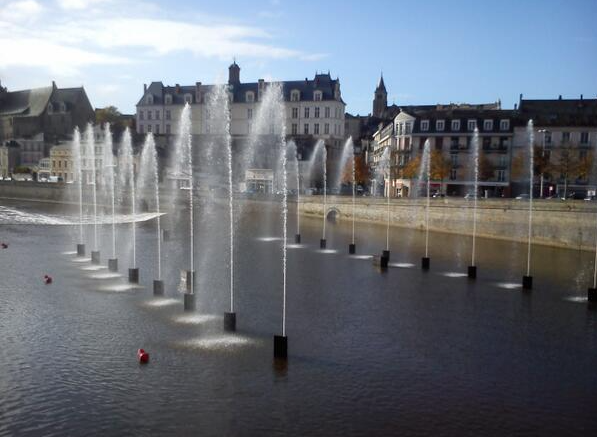
Uploaded on 2014-11-05 by AnneLaurej
-people : there are about 50000 inhabitants, a steady number. A vast majority of those inhabitants can be represented as « stock », especially old people who have been living in houses or social housing for a very long time. This stock is affected by flows and decreases when people die or leave the city. It can conversely increases when babies are born, people migrate to the cities or commute there to work. Those are usually quite steady flows. Migrants can be french workers relocating to the city because of job opportunities or migrants from European countries or African countries (a lot of people from Guinea have migrated to the city in recent years). Other types of flows varies depending on the period of the year : students come in in september and leave for vacations. Tourists also mostly come during summer time or in december because we are very famous in France for our christmas illuminations. ![Illumination at Christmas and the tourists crowd][1] Because of the rising fuel costs and the progress of technologies, people will turn more and more towards teleworking and flows of commuters will therefore decrease. -food : like everywhere the supermarkets on the outskirts pattern has been predominant in my city for some decades. Food coming from all over the world can be bought in the arrays. Short distance flows also exist and can be seen at local markets when local producers come to sell their vegetables and fruits. The waste is more and more recycled and composted in the gardens. Stocks of food also exist (homegrown food in the backyards or in shared/workers gardens) We are currently seeing a comeback of the circular economy and people are becoming more demanding about the quality of their food. Innovative forms of distribution are becoming more popular : the « beehive » system for example allows producers to sell on an internet website directly to consumers who can then come pick up the produces they ordered. We are very likely to see increased interest in those systems without intermediaries in the future. -traffic : in my city, there are stocks of traffic vehicles such as cars owned by residents, buses of the transport company, bikes owned by residents and also by the city. There vehicles are flowing inside and outside the city to commute, go visit friends, go shopping,...They vary according to the time of the day (there are peak hours at 9 and 6) and the time of the week. They are more intense and fast on certain roads (like on the outskirts). There are also flows of train carriages picking and delivering passengers and trucks delivering goods. There can also be irregular flows due to accidents, vacations, special events,… We are already seeing an increase in new modes of transport : people tend more and more to share their cars with strangers (against money) and young people accustomed to that buy less cars than their elders. One can now also rent a car from a stranger ! My city is little but maybe in a few years, it will install an electric renting car system where one could just pick up a car for an hour. The concept of stocks and flows will closely intertwine and become fuzzy ! -Water : it is an essential part of our city as it is crossed by the river in its center. The river could be considered as a cultural immaterial stock as it attracts a lot of people (we have impressive water jets) who like to stroll along it or cruise on it. ![enter image description here][2] It goes up if there are a lot of rainfalls and down if not. It is also the source and receiving end of numerous flows as water is pumped in the river at the adjacent town, comes into the city where it is treated and distributed as drinkable water. In the future, because of the need for renewable resources, people will set up systems to collect rainwater, treat it and use it for their own uses. These internal flows will be difficult to see on a city-wide scheme. [1]: https://edxuploads.s3.amazonaws.com/14151828914198694.png [2]: https://edxuploads.s3.amazonaws.com/14151855921424917.png